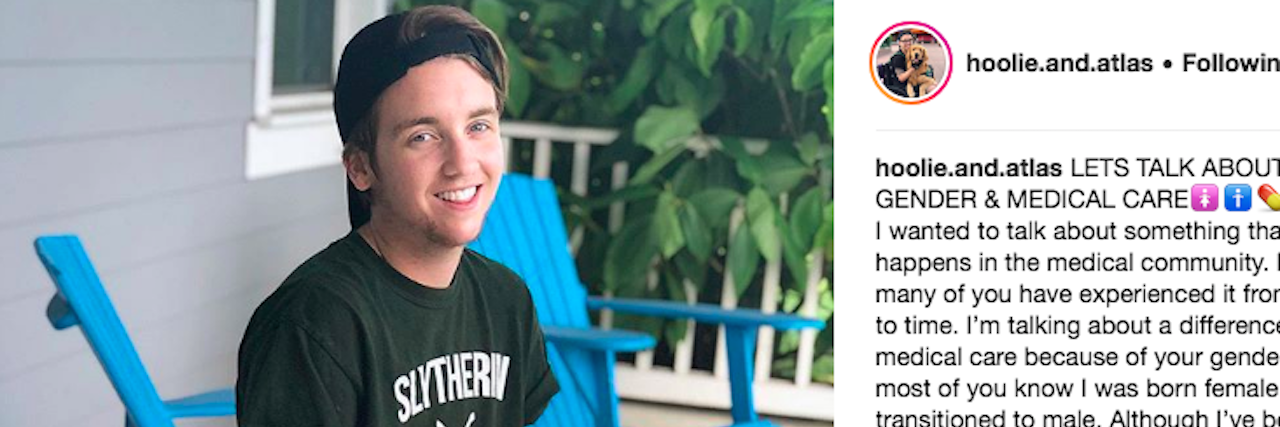Transgender Man Reveals Gender Bias in Health Care Before and After Transitioning
Women with chronic illness often report that their gender causes them to be dismissed, that doctors chalk up their symptoms to their periods or that’s just what women have to deal with so they need to “toughen up.” Even when women explain how unfairly they’re treated, they still may be dismissed by those who don’t believe this “gender gap” even exists. One chronic illness warrior is using his unique position as a transgender man, who has experienced health care as both a female and male, to argue that this “gender divide” in health care is very real.
• What is Ehlers-Danlos Syndrome?
• What Are Common Ehlers-Danlos Syndrome Symptoms?
Julian Gavino, a 22-year-old with chronic illnesses including Ehlers-Danlos syndrome, gastroparesis, celiac disease and mast cell activation syndrome, was born female and began living as male eight years ago. He shared an Instagram post on Friday explaining the gender inequality he noticed in the health care system.
“I can tell you there were differences,” he wrote. “Big ones.”
When I was younger everything in my life was attributed to mental health and anxiety. I had heart palpitations and had been experiencing dizziness/blood pooling and the occasional passing out for YEARS. I was refused treatment numerous times because “it’s all in my head”. When I started experiencing my nerve disease I went to the hospital numerous times for numbness on one side of my body. I was questioned mercilessly about being on drugs, laughed at, and sent home. This nerve disease is now the primary reason I have trouble walking.
He said when he passed as male and had his name and gender changed, he noticed a significant difference in the care he received.
“Never once was anxiety/mental health brought up, and my care was sped up dramatically. I was treated with a different professionalism. Even spoken to differently,” he wrote. “It took me a while to even realize what was happening and that this was a form of privilege due to gender.”
Gavino highlighted the need for change in the health care system and that everyone is entitled to the same respect and level of care.
“Women and their health concerns are just as valid as men. Why does the health industry hold them differently? How can we end this stigma and let them know that gender shouldn’t matter?”
Gavino told The Mighty he was compelled to write the post because the change he experienced was so dramatic.
“I wanted to let people in on that and have others relate, or people learn that this is a real issue,” he said. “I hope people can take awareness from this post. To be aware of the way they are being treated, speak out about it, and stand up for themselves.”
Research backs up Gavino’s observations. One study found that women waited on average 65 minutes in the emergency room to receive opioid analgesia, while men waited 49 minutes. In another study, women with dementia in the U.K. were found to receive worse treatment than men with dementia. A 2011 report by the Institute of Medicine found that women report higher levels of pain, but also “misdiagnoses, delays in correct diagnosis, improper and unproven treatments, gender bias, stigma, and neglect, dismissal and discrimination.”

